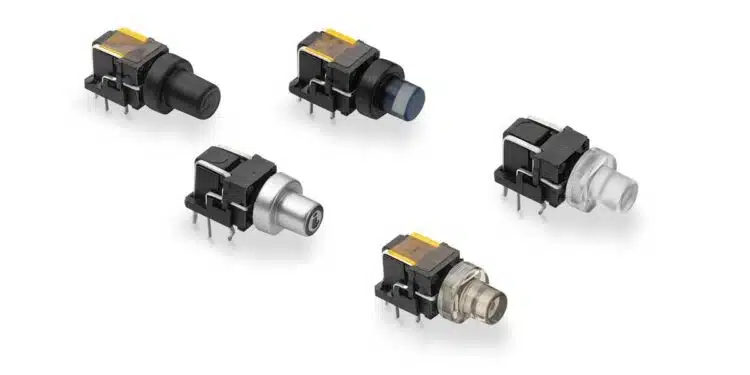Littelfuse releases right-angle illuminated tactile switches that offer customization and versatility for complex electronic applications. Surface-mount and through-hole options with multiple LED colors and markings enable seamless integration in telecom, data center, and professional audio/video equipment markets.
Littelfuse, Inc, an industrial technology manufacturing company empowering a sustainable, connected, and safer world, announces the C&K Switches EITS Series right-angle illuminated tactile switches.
Available in surface-mount PIP terminal and standard through-hole configurations, these switches provide innovative, versatile solutions for a wide range of applications, including telecom, data centers, and professional audio/video equipment. The EITS Series offers multiple LED colors, including single- and bi-color options, and features custom caps to suit specific application requirements. View the video.
The EITS Tactile Switches offer these key features and benefits:
- Surface-Mount PIP Terminal and Through-Hole Configurations: The EITS Series is available in both surface-mount PIP terminal and standard through-hole configurations, offering engineers greater flexibility in assembly and integration.
- Multiple LED Colors: Choose from a variety of LED colors, including bi-color options, allowing for enhanced visual indicators and signaling in designs.
- High-Temperature Cap for PIP Reflow Soldering: The high-temperature cap makes these switches compatible with PIP reflow soldering, improving the durability and reliability of surface mounting.
- Mylar Tape on Top of PIP Version: Facilitates easier pick-and-place during the surface-mounting process, streamlining production.
- Customized Caps and Markings: Custom cap colors and markings are available upon request, enabling tailored solutions that meet specific design aesthetics and functional requirements.
“The EITS right-angle illuminated tactile switches are easy to integrate, offering enhanced functionality, a wide operating temperature range, variety of operating forces, and customizable LED colors and cap markings,” said Gavin Xu, Technical Development Manager, Electronics Business Unit Engineering at Littelfuse. “With THT, SMT, and PIP assembly options, these switches provide engineers with exceptional flexibility and straightforward PCB integration.”
The EITS Series Tactile Switches are ideally suited for a variety of markets and applications, including:
- Telecom: Base stations, multiplexers, network switches, and local control units
- Data Centers: Rack and blade servers, network routers, universal power supplies (UPS), and power distribution units (PDU)
- Professional Audio/Video: Mixing consoles, production switchers, recording decks, and broadcast control boards
The EITS Series offers a side-actuated design that provides enhanced flexibility for PCB layouts, setting it apart from other available tact switches on the market. The multiple LED color options, including single- and bi-color, allow for greater customization, making these switches ideal for a variety of applications that require diverse visual indications. With options for surface-mount PIP terminals and a high-temperature cap, the EITS Series is designed to streamline the manufacturing process and ensure robust performance in demanding environments.
































